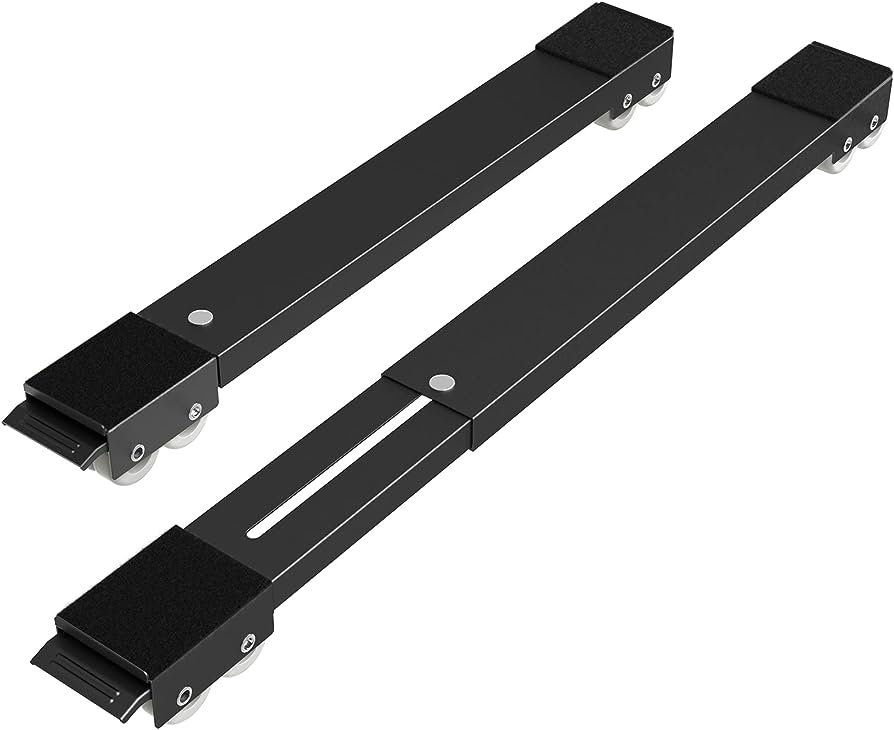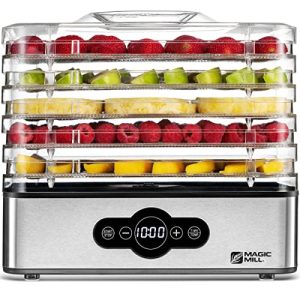Contents
- Choosing the Right Appliance Dolly
- Preparing the Appliance for Moving
- Using an Appliance Dolly Safely
- Step-by-Step Guide for Moving Appliances
- Tips for Moving Specific Appliances
- Additional Tools and Equipment
- Benefits of Using an Appliance Dolly
- Considerations Before Renting or Buying
- Renting vs. Buying an Appliance Dolly
- Conclusion
Moving heavy appliances can be a daunting task, but with the help of an Appliance Dolly, it has never been easier. This cleverly designed tool is specifically built to handle the weight and size of appliances, allowing you to transport them effortlessly and without any strain. With the addition of the appliance dolly strap, you can securely fasten your appliances to the dolly, providing even more stability during the move. Say goodbye to backaches and frustration – moving appliances has never been so simple!
Choosing the Right Appliance Dolly
When it comes to moving heavy appliances, having the right tools can make the task much easier and safer. An appliance dolly is an essential piece of equipment that can greatly simplify the process. But with so many options available, how do you know which one is the right choice for your needs? Here are some key factors to consider when selecting an appliance dolly:
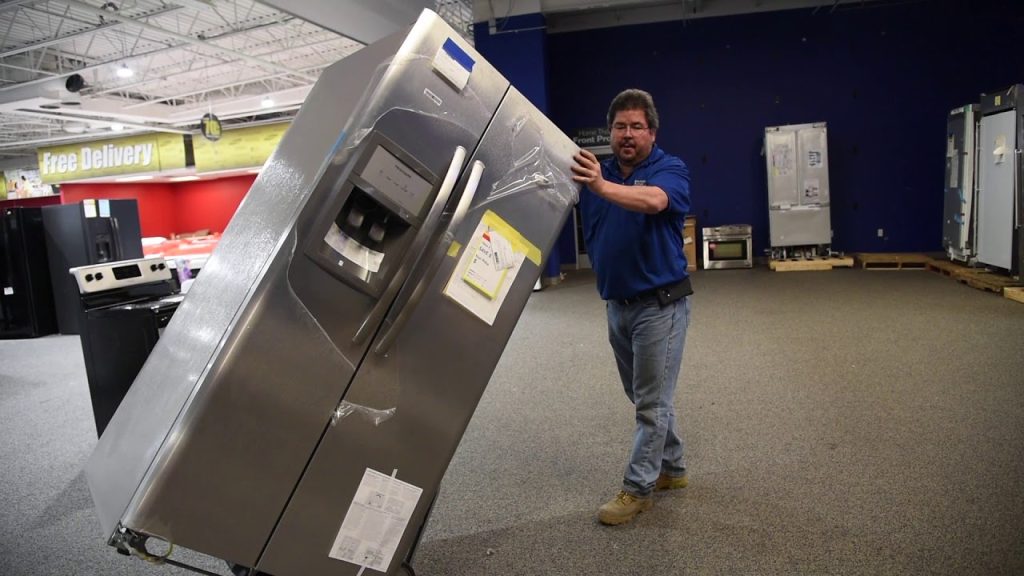
Consider the Weight Capacity
The weight capacity of the dolly is perhaps the most crucial factor to consider. Before purchasing or renting an appliance dolly, you need to know the weight of the appliances you plan to move. Make sure to choose a dolly that can handle the weight of your heaviest appliance, plus some extra capacity for safety. It’s always better to have a dolly with a higher weight capacity than you think you’ll need, as it provides an added margin of safety.
Check the Size and Dimensions
Appliances come in various sizes, so it’s important to choose a dolly that can accommodate the specific dimensions of the appliances you’ll be moving. Check the width, height, and depth of the dolly’s platform to ensure it’s large enough to securely hold your appliances. Additionally, consider the height of the dolly itself. A dolly with an adjustable handle or platform can be useful for accommodating appliances of different sizes.
Look for a Sturdy and Stable Frame
The frame of the appliance dolly plays a critical role in providing stability and durability. Look for a dolly with a sturdy and well-built frame, preferably made of strong materials like steel. Ensure that the frame is properly welded and has reinforcements to handle heavy loads. A stable and robust frame will not only make the dolly easier to use but also guarantee the safety of your appliances during the moving process.
Consider the Type of Wheels
Wheels are another crucial aspect when choosing an appliance dolly. Look for dolly wheels that are large enough to navigate different terrains, such as stairs or uneven surfaces. Rubber or pneumatic wheels are ideal for providing traction and shock absorption, reducing the risk of damage to your appliances and the surrounding surfaces. Additionally, consider whether you need swivel wheels for better maneuverability or fixed wheels for added stability.
Look for a Dolly with a Strap
An appliance dolly with a built-in strap can provide extra security and prevent your appliances from shifting or falling off during transportation. The strap should be adjustable and made of sturdy material to ensure a tight and reliable hold. A dolly with a strap will give you peace of mind and make the moving process safer and more efficient.
Preparing the Appliance for Moving
Before you start moving your appliances with the help of an appliance dolly, it’s important to prepare them properly to avoid any damage or issues during the process. Here are some steps you should follow to ensure a smooth and safe move:
Emptying and Cleaning the Appliance
Before moving any appliance, it’s crucial to empty it completely. Remove all items, food, or liquids from refrigerators, freezers, and dishwashers. For washing machines and dryers, make sure to remove any clothing or laundry that may be inside. Emptying the appliances will not only make them lighter and easier to move but also prevent any spills or leaks during transportation. Once emptied, take the time to clean the appliances thoroughly, removing any dirt, dust, or debris that could cause issues.
Disconnecting Power and Utilities
Before moving any appliance, it’s essential to disconnect them from power sources and utilities. Unplug refrigerators, washing machines, dryers, and dishwashers from the electrical outlets. For gas appliances, it’s important to also disconnect the gas supply to avoid any potential hazards. Follow the manufacturer’s instructions or consult a professional if you’re unsure how to safely disconnect the power and utilities.
Removing Removable Parts
Some appliances have removable parts or accessories that should be removed before moving them. For example, refrigerator shelves and drawers, washing machine and dryer drums, or dishwasher racks should be taken out and packed separately. This will not only prevent any damage to these detachable parts but also make the appliances lighter and easier to handle during the move. Keep all the removable parts organized and labeled to facilitate reassembly.
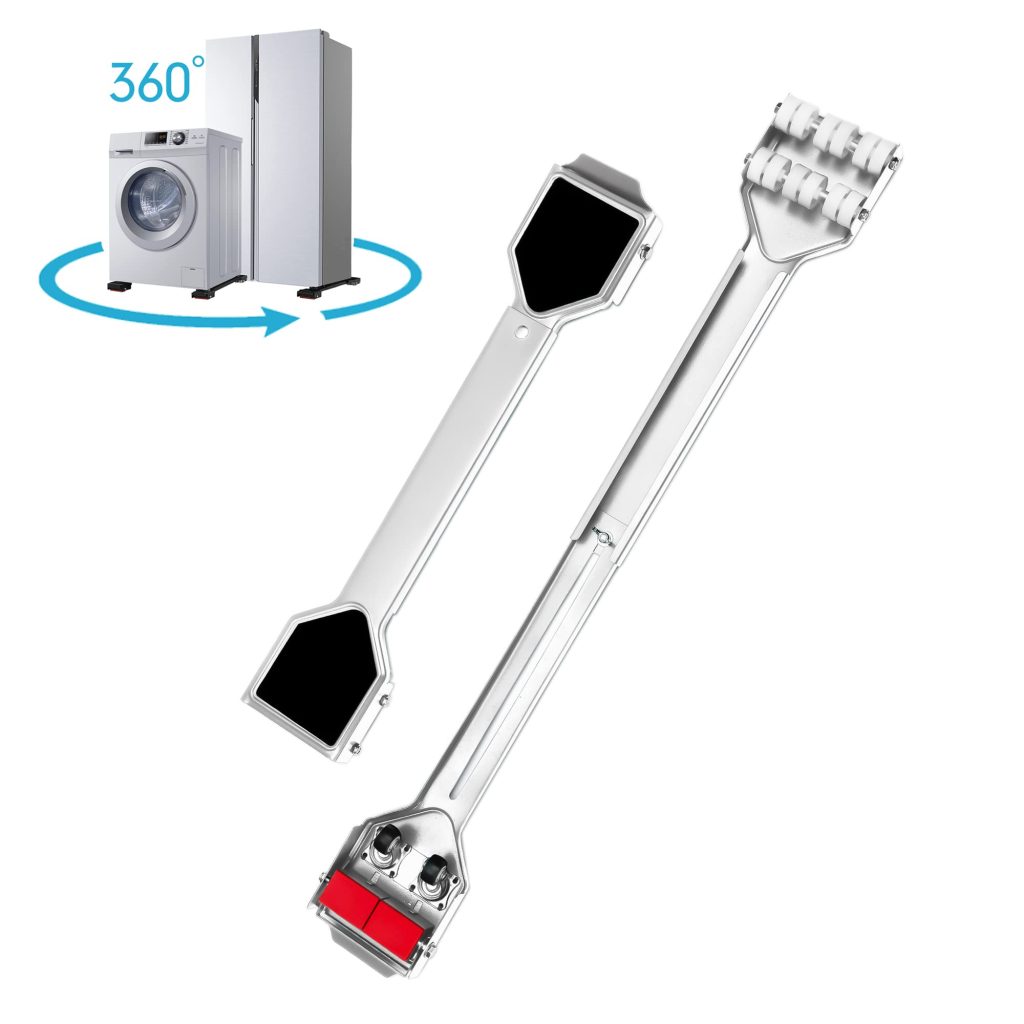
Securing Loose Components
Before moving any appliance, make sure to secure any loose components. Check if there are any moving parts or doors that need to be locked or secured. For example, refrigerator doors can be taped shut to prevent them from swinging open during transportation. Securing loose components will help prevent any damage to the appliance and ensure that everything stays in place during the move.
Using an Appliance Dolly Safely
Now that you’ve chosen the right appliance dolly and prepared your appliances for moving, it’s time to focus on using the dolly safely and efficiently. Following these guidelines will help ensure a smooth and incident-free moving process:
Review the User Manual
Before using the appliance dolly, take the time to review the user manual provided by the manufacturer. Familiarize yourself with the dolly’s features, recommended weight limits, and any specific instructions for safe use. Understanding how to operate the dolly properly will help you avoid accidents or damage to your appliances.
Ensure Proper Gripping and Balance
When loading an appliance onto the dolly, it’s essential to ensure proper gripping and balance. Place your hands on the sturdiest part of the appliance to have a firm grip. If possible, enlist the help of another person to assist with lifting and balancing the appliance on the dolly. Proper gripping and balance are crucial to prevent appliances from tipping over or falling during transportation.
Use Proper Lifting Techniques
Using proper lifting techniques is vital for your safety and the safety of the appliances. Bend your knees and lift with your legs, keeping your back as straight as possible. Avoid twisting your body while lifting or moving the appliance. If the appliance is too heavy, do not attempt to lift it on your own. Instead, ask for assistance or use specialized lifting tools like furniture sliders or lifting straps.
Secure the Appliance to the Dolly
Once the appliance is properly loaded onto the dolly, it’s important to secure it tightly. If the dolly has a built-in strap, use it to fasten the appliance to the dolly securely. Ensure that the strap is tight enough to hold the appliance in place but not so tight that it causes damage. If the dolly doesn’t have a strap, you can use additional tie-downs or bungee cords to secure the appliance to the dolly.
Avoid Overloading the Dolly
One common mistake when using an appliance dolly is overloading it with too many appliances or exceeding the weight capacity. Overloading the dolly can compromise its stability and increase the risk of accidents or damage to the appliances. Always adhere to the weight limits specified by the manufacturer and make multiple trips if necessary to ensure the safety of both the appliances and the movers.
Avoid Obstacles and Stairs
When using an appliance dolly, it’s crucial to avoid any obstacles or stairs along the moving path. Clear the path of any furniture, rugs, or debris that could obstruct the movement of the dolly. If you encounter stairs, it’s best to use a different method, such as a stair climbing dolly or enlisting the help of additional people to carry the appliance safely. Remember to take your time and proceed with caution to avoid any accidents or damage.
Maintain Clear Vision While Moving
While using an appliance dolly, it’s important to maintain a clear line of sight to ensure safety. Keep your path clear from any obstructions and make sure there is enough space to maneuver the dolly without risking collisions. If your vision is obstructed, ask someone to guide you or use additional mirrors to see around corners or tight spaces. Always prioritize safety and be aware of your surroundings while moving appliances with a dolly.
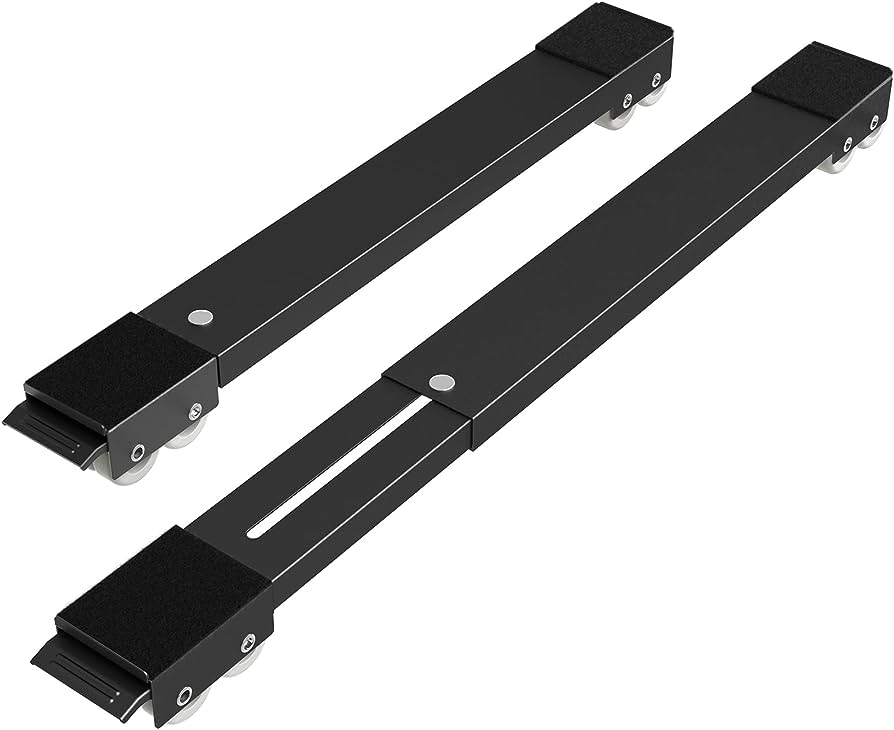
Use Assistance When Needed
Moving heavy appliances can be a challenging task, especially when it comes to navigating stairs or other difficult areas. Don’t hesitate to ask for assistance when needed. Enlist the help of friends, family, or professional movers to ensure the safe and efficient transportation of your appliances. Having additional hands can make a significant difference in reducing the strain on your body and preventing accidents during the move.
Step-by-Step Guide for Moving Appliances
Now that you’re familiar with the preparation and safety guidelines, here’s a step-by-step guide to help you move appliances using an appliance dolly:
Step 1: Plan the Path and Measure Doorways
Before you begin moving the appliances, plan the path you’ll take and measure all the doorways and hallways to ensure the appliances can fit through comfortably. Take note of any narrow or tight spaces that may require additional maneuvering.
Step 2: Clear the Pathway
Clear the pathway of any obstacles, furniture, or rugs that may hinder the movement of the dolly. Ensure that there are no loose cables or cords that could trip you or get entangled with the dolly.
Step 3: Load the Appliance onto the Dolly
With the help of another person, lift the appliance onto the dolly, ensuring proper gripping and balance. Make sure the weight is evenly distributed on the platform of the dolly, and the appliance is centered and secure.
Step 4: Secure the Appliance to the Dolly
If the dolly has a built-in strap, use it to secure the appliance tightly to the dolly. If not, use additional tie-downs or bungee cords to hold the appliance firmly in place.
Step 5: Move the Dolly with Caution
While moving the dolly, proceed with caution, using proper lifting and pushing techniques. Keep a clear line of sight, avoid obstacles and stairs, and move at a controlled pace, adjusting your grip as necessary.
Step 6: Unload the Appliance Safely
Once you reach the desired location, carefully unload the appliance from the dolly with the help of another person. Ensure proper gripping and balance while lifting it off the dolly and place it in its new position slowly and securely.
Tips for Moving Specific Appliances
Different appliances require specific handling techniques due to their unique characteristics. Here are some tips to help you move some common household appliances:
Moving a Refrigerator
Before moving a refrigerator, make sure it has been emptied and defrosted. Secure the doors with tape or bungee cords to prevent them from swinging open during transportation. Be cautious of the refrigerator’s weight and size as they can make it challenging to navigate narrow spaces.
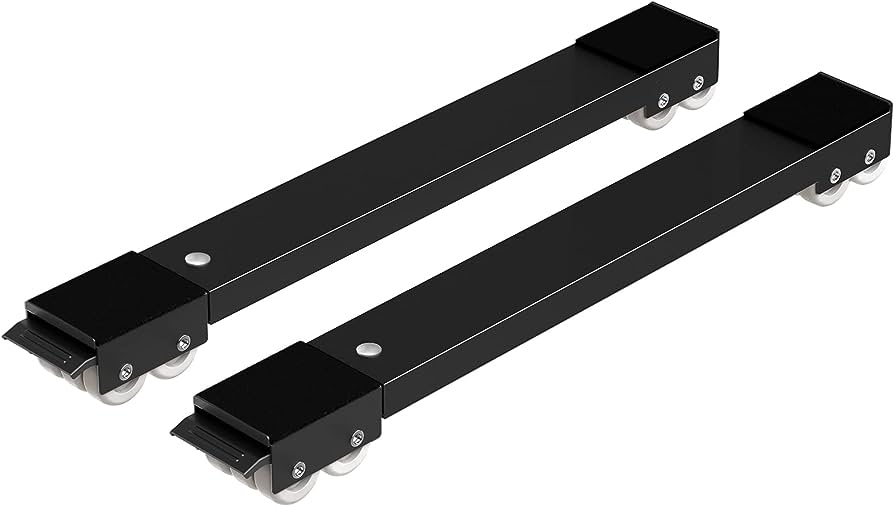
Moving a Washing Machine
Disconnect the washing machine from power and utilities and drain any remaining water. Secure the drum with the manufacturer’s shipping bolts or use straps to prevent it from moving excessively during transportation. Place towels or blankets under the machine to protect floors from any residual water.
Moving a Dryer
Like the washing machine, disconnect the dryer from power and utilities before moving it. Remove the lint trap and any other detachable parts. Use straps or bungee cords to secure the door in place, preventing it from opening accidentally. Be cautious of the dryer’s weight and size, as it can make it challenging to maneuver.
Moving a Dishwasher
Empty and clean the dishwasher before moving it. Disconnect it from power and utilities and ensure that the door is securely closed and latched. Use straps or bungee cords to prevent the door from opening during transportation. Be mindful of the dishwasher’s weight and size when loading it onto the dolly.
Moving a Stove or Oven
Before moving a stove or oven, disconnect it from power and utilities and remove any detachable parts, such as burners or racks. Secure the oven door with tape or straps to prevent it from swinging open during transportation. Remember that stoves and ovens can be heavy, so use proper lifting techniques and seek assistance if needed.
Additional Tools and Equipment
While an appliance dolly is the primary tool for moving appliances, there are some additional tools and equipment that can make the process even smoother and more efficient. Consider investing in the following items:
Furniture Sliders
Furniture sliders are useful for moving heavy appliances across smooth surfaces, such as hardwood or tile floors. They reduce friction and make it easier to slide the appliance without causing damage to the floor. Place the sliders under the appliance’s feet or corners and push or pull it with ease.
Lifting Straps
Lifting straps, also known as moving straps or forearm forklifts, can provide additional leverage and make lifting heavy appliances more manageable. The straps distribute the weight across your shoulders and arms, reducing strain on your back. They are particularly helpful when navigating stairs or uneven surfaces.
Moving Blankets
Moving blankets are thick and durable blankets designed to protect appliances from scratches, dents, and other damage during transportation. Wrap the blankets around the appliance or use them as padding between appliances to minimize the risk of damage.
Ratchet Straps
Ratchet straps are heavy-duty straps with a ratcheting mechanism that allows for tight and secure fastening. They can be used as an alternative to built-in straps or to provide additional reinforcement when securing appliances to the dolly. Always ensure that the straps are properly tightened and double-check their tension before moving.
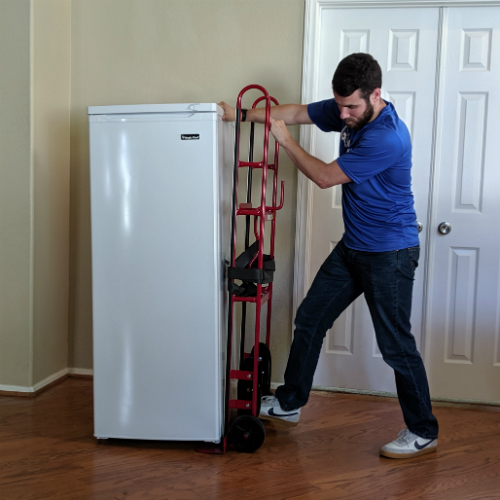
Utility Knife
A utility knife is a handy tool for removing packaging, cutting tape, or dismantling boxes during the moving process. Keep a utility knife within reach to quickly access and unwrap appliances or remove any protective coverings.
Benefits of Using an Appliance Dolly
Using an appliance dolly offers several advantages when it comes to moving heavy appliances. Here are some key benefits of using an appliance dolly:
Reduces Physical Strain and Injury Risk
Moving heavy appliances can put a significant strain on your body. An appliance dolly enables you to distribute the weight more effectively, reducing the risk of back injuries and muscle strains. By allowing the dolly to carry the bulk of the weight, you can move appliances with minimal physical strain.
Increases Efficiency and Speed
Using an appliance dolly can significantly increase the efficiency and speed of the moving process. Instead of struggling to carry appliances individually or making multiple trips, a dolly allows you to transport appliances more quickly and effectively. This time-saving advantage is particularly beneficial when you have multiple appliances to move or a tight moving schedule.
Protects Appliances from Damage
Appliances are expensive investments, and it’s crucial to protect them during the moving process. An appliance dolly with features like straps, sturdy frames, and specialized wheels can help prevent damage caused by dropping, dragging, or tipping over. With a dolly, appliances are less likely to sustain scratches, dents, or other forms of damage.
Provides Versatility for Different Appliances
An appliance dolly is a versatile tool that can be used for moving a wide range of appliances, from refrigerators to washing machines, dryers, dishwashers, and stoves. With the ability to accommodate various sizes and weights, an appliance dolly is a practical and versatile solution for all your moving needs.
Cost-effective Solution for Moving
Renting or purchasing an appliance dolly is a cost-effective solution for moving appliances. Hiring professional movers or using alternative methods can be expensive and may not offer the same level of convenience and safety. Investing in an appliance dolly or renting one for a specific move can save you money in the long run, especially if you plan to move appliances multiple times.
Considerations Before Renting or Buying
Before deciding whether to rent or buy an appliance dolly, there are several factors to consider. These considerations will help you determine the best approach for your specific needs:
Frequency of Appliance Moves
If you frequently move appliances or plan to move multiple times in the future, purchasing an appliance dolly may be the more cost-effective option. However, if you only need to move appliances occasionally or have limited storage space, renting a dolly for each move can be a more practical solution.
Budget and Cost
Consider your budget when deciding whether to rent or buy an appliance dolly. Buying a quality dolly can be a long-term investment that pays off over time. On the other hand, renting a dolly for each move may be more budget-friendly in the short term, especially if you don’t anticipate moving appliances frequently.
Storage Space
It’s important to consider where you will store the dolly when it’s not in use. If you have sufficient storage space available, purchasing a dolly may be a viable option. However, if storage space is limited, renting a dolly for each move eliminates the need for long-term storage.
Rental Availability
Before deciding to rent, ensure that there are rental services available in your area. Research local moving equipment rental companies and compare their prices, availability, and terms. Consider the convenience of renting, especially if the rental company offers delivery and pick-up services.
Quality and Durability
If you choose to purchase an appliance dolly, make sure to invest in a high-quality and durable product. Research different brands, read customer reviews, and consider the warranty or return policy. A well-built and durable dolly will last for many years, providing reliable and safe transportation for your appliances.
Renting vs. Buying an Appliance Dolly
To help you make an informed decision, here are the pros and cons of renting and buying an appliance dolly:
Pros of Renting
- Cost-effective for occasional moves
- No need for long-term storage
- Convenient and readily available
- Renting options may include delivery and pick-up services
Cons of Renting
- Long-term costs may add up if you move appliances frequently
- Limited availability in some areas
- Limited customization options
- No ownership of the equipment
Pros of Buying
- Cost-effective for frequent moves or long-term use
- Full control over the equipment’s customization and maintenance
- Can be used for various moving purposes
- Potential resale value or use for future moves
Cons of Buying
- Higher upfront cost
- Requires storage space when not in use
- Maintenance and repairs may be necessary
- Limited convenience compared to renting
Conclusion
Moving appliances can be a daunting task, but with the right tools and proper techniques, it can be made much easier and safer. An appliance dolly is an indispensable tool for efficiently moving heavy appliances. When choosing the right dolly, consider factors such as weight capacity, size and dimensions, frame stability, wheel type, and the presence of a strap. Preparing appliances for moving involves emptying and cleaning them, disconnecting power and utilities, removing removable parts, and securing loose components.
To use an appliance dolly safely, review the user manual, ensure proper gripping and balance, use proper lifting techniques, secure the appliance to the dolly, avoid overloading, avoid obstacles and stairs, maintain clear vision, and ask for assistance when needed. With a step-by-step guide, you can move appliances with ease, considering factors like planning the path, clearing the pathway, loading and securing the appliance, moving with caution, and unloading safely.
Specific tips and considerations are provided for moving various appliances, such as refrigerators, washing machines, dryers, dishwashers, and stoves or ovens. Additionally, additional tools and equipment like furniture sliders, lifting straps, moving blankets, ratchet straps, and a utility knife can enhance the moving process.
Using an appliance dolly offers several benefits such as reducing physical strain and injury risk, increasing efficiency and speed, protecting appliances from damage, providing versatility for different appliances, and being a cost-effective solution for moving. Before deciding whether to rent or buy an appliance dolly, consider factors like frequency of appliance moves, budget and cost, storage space, rental availability, and quality and durability. Each option has its pros and cons that should be carefully weighed.
By following these comprehensive guidelines and tips, moving appliances with an appliance dolly will become a hassle-free and successful task. Remember to prioritize safety, seek assistance when needed, and make use of the right tools to protect your appliances and yourself during the moving process.

